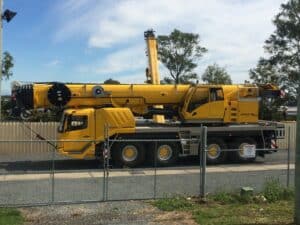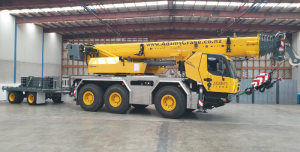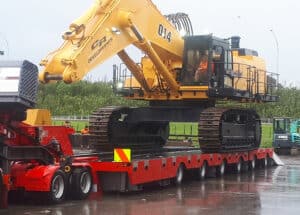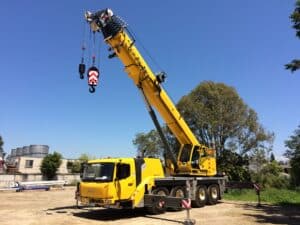Weathervaning: Understanding Why Cranes Spin in Storms
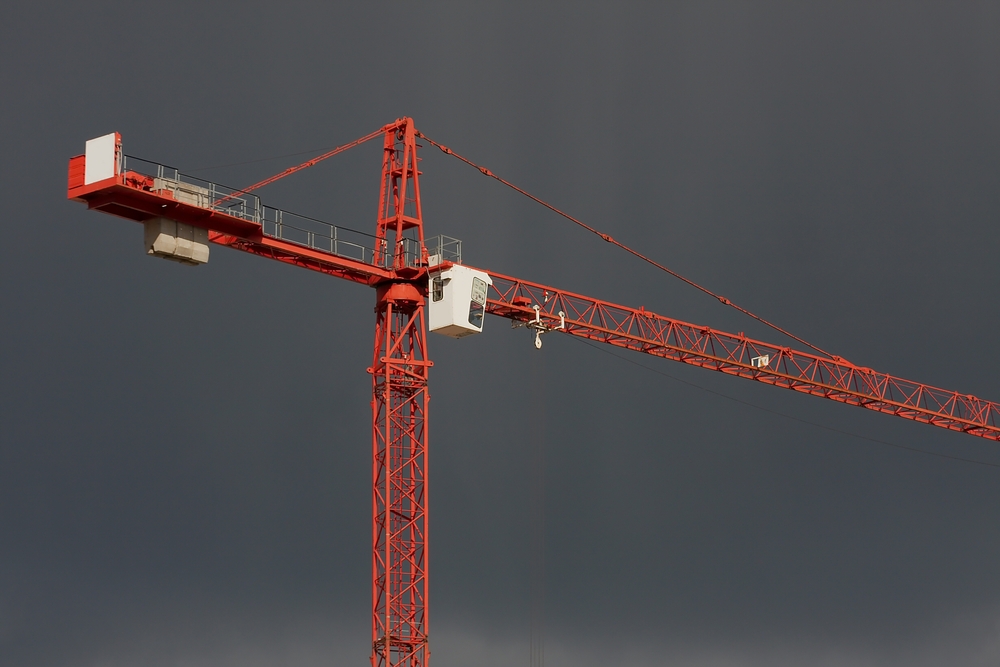
Tower crane against dark, stormy sky
Have you ever seen a tower crane in a storm, spinning around in circles? This phenomenon is called weathervaning. It is an essential safety feature that is designed to help prevent cranes from collapsing in high winds, however, many people don’t understand how it works and how safe it is.
What Is Weathervaning for Cranes?
Tower cranes are an essential piece of machinery in the construction industry, as they are used to lift and move heavy materials from one location to another. Weathervaning is an important safety feature of tower cranes, which helps prevent them from toppling over in high winds.
Weathervaning is a type of self-levelling system that allows the tower crane to rotate in the direction of the wind. This is accomplished by the crane operator installing a wind vane, which is a device that is attached to the top of the crane. The wind vane senses the direction of the wind and rotates the crane accordingly. This helps to reduce the risk of the crane toppling over due to strong gusts of wind.
When the wind direction changes, the crane will also rotate in the new direction. This helps to keep the load balanced and helps to prevent the crane from becoming unbalanced and toppling over. The crane operator is also able to manually override the weathervaning system if needed.
In addition to the weathervaning system, tower cranes also have a slew lock. This is a safety feature that prevents the crane from rotating when the wind is too strong. The slew lock engages when the wind speed reaches a certain threshold, preventing the crane from rotating and helping to keep it stable in high winds.
Weathervaning is an important safety feature of tower cranes that helps to prevent them from toppling over in high winds. The system allows the crane to rotate in the direction of the wind, helping to keep the load balanced and reducing the risk of the crane becoming unbalanced and toppling over. The slew lock is also an important safety feature that prevents the crane from rotating when the wind is too strong.
What Is the Purpose of Weathervaning?
The purpose of weathervaning for a tower crane is simply to prevent damage that could be caused by the wind. By allowing the tower to move with the wind instead of fighting it, removes and reduces the pressure exerted on the crane’s structure that would otherwise fail and ultimately cause the crane to collapse causing damage.
Is It Common for Cranes to Fall Over?
Tower cranes are a common sight in many cities and towns, but it is not common for them to fall over. Tower cranes are tall, stable, and engineered structures that are used to lift and move heavy loads. When a tower crane falls, it can be a devastating event with catastrophic consequences.
The primary cause of tower crane collapses is human error. This includes a variety of issues, such as failure to properly construct the crane, incorrect maintenance or repairs, and improper operation. In some cases, the collapse may be caused by a natural disaster or an act of vandalism.
However, there are several measures that can be taken to minimise the risk of a tower crane collapse. First, the crane should be constructed and maintained according to the manufacturer’s instructions. Additionally, the crane should be regularly inspected by a qualified technician and any problems should be addressed immediately.
In order to ensure the safety of the crane operator, there should be a safety system in place. This system should include measures such as a certified instructor, safety harnesses, and a barrier around the crane to keep people away from the load.
In addition, the load should be properly balanced and the crane should not be overloaded. If the load is too heavy, the crane can become unstable and fall over. Furthermore, the crane should be operated by a qualified operator who is familiar with the crane and the load.
How Do You Weathervane A Crane?
When high winds or a storm is expected, weathervaning a crane involves taking off the slew brake or parking brake and making sure the front jib is longer and heavier. This allows it to move in the direction of the wind, reducing the pressure on the tower.
To ensure safety during weathervaning, it is important to survey the surrounding area for any debris that may move into a contact zone of the tower should the crane be spinning. Taking precautionary measures to prevent possible hazards is a key component of safe weathervaning.
Conclusion
If you see a crane spinning around in high winds or a storm, do not be alarmed as the crane is supposed to do this. Weathervaning is a safety feature designed to reduce force on the crane’s structure in order to prevent the crane from collapsing and causing damage.
